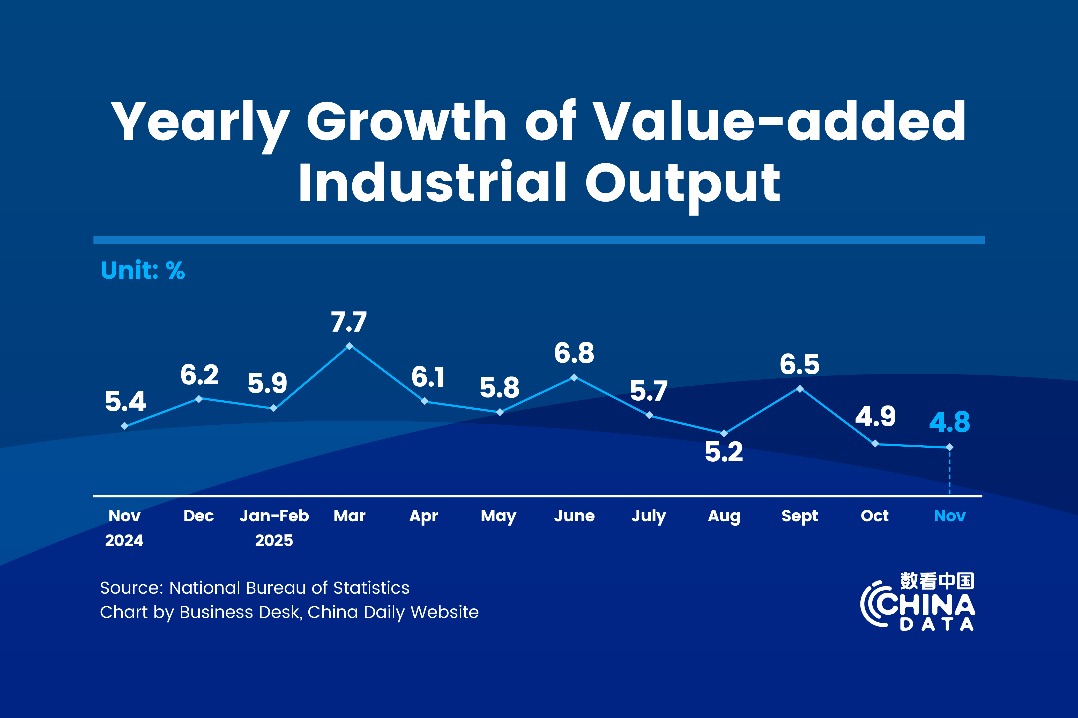Audio program purveyors stimulated by relaxation needs


Xu Xiaoqian, a 28-year-old middle school teacher in Beijing, said that every night, she lies on her bed, closes her eyes and puts on earphones to listen to audiobooks.
Listening to audiobooks on podcasting and audio-sharing platforms brings her great joy and helps ease anxiety before she goes to sleep, she said.
"The voices are full of magic. The storyteller's mellow and tender tones make me feel relaxed after a day's work, helping me drift off to sleep faster," Xu said, adding she has been willing to spend money on online audiobooks she likes.
Hundreds of millions of Chinese living in today's fast-paced society are listening to audio recordings or broadcasts of soothing music to relieve tension, fall asleep faster and sleep more soundly.
A survey published by the China Sleep Research Society showed that more than 300 million Chinese suffer from sleep disorders, and insomnia in Chinese adults is as high as 38.2 percent. Tuning into podcasts seems to be an effective method to solve people's sleep problems.
Users spend more than an hour on average listening to the Ximalaya app's audio programs before going to sleep, according to a new report from Ximalaya FM, one of China's biggest audio-sharing platforms. Young people are the biggest group, as those aged 18 to 35 account for 41 percent of the total users.
Peak usage time is from 10-11 pm. Those who don't fall asleep until 2 am or later represent 10.9 percent of audio program users.
The post-1995 generation, often regarded as night owls, many of whom don't go to bed until after 1 am, are heavy users of audiobooks, podcasts, white noise and light music to help them relax, the report said.
In addition to smartphones, people use a variety of devices to listen to audio content before they fall asleep as technology and device uses have expanded. Some 62 percent of users opt for smart speakers to listen to audio streaming content before bedtime. Wearable gadgets also have gained popularity among users, the report said.
Use of audio content before bed is strongest in China's first and second-tier cities, including Beijing, Shanghai, Tianjin, Guangzhou, Chengdu and Shenzhen.
Ximalaya's report said radio drama, suspense, science fiction, traditional Chinese culture, film and television, stories and news are among the most popular types of audio content among younger listeners.
China's online audio industry has grown rapidly in recent years, with revenue amounting to 22 billion yuan ($3.41 billion) in 2021, up 67.9 percent on a yearly basis, according to consultancy iiMedia Research. The figure is projected to rise 41.8 percent year-on-year to 31.2 billion yuan this year.
The consultancy also estimated that the number of podcast listeners will increase from 640 million in 2021 to 690 million by the end of 2022.
Zhang Yi, CEO and principal analyst at iiMedia Research, said there is remarkable room for growth in China's online audio industry, fueled by surging demand from users, continuous content innovation and diversified application scenarios.
The number of people who are willing to spend money on paid audio content is rising every year, Zhang said, adding that more financial support should be given to creators to produce high-quality content.
Ximalaya, founded in 2012 and based in Shanghai, provides a wide variety of audio content that allows people to produce, share and consume knowledge, information and entertainment. It is putting more emphasis on its paid audio content service amid mounting competition from other podcasting platforms such as Lizhi FM and Qingting FM.
The audio-sharing platform filed for an initial public offering in Hong Kong in September. The company updated its prospectus in line with the Hong Kong stock exchange's listing rules to renew data and information in March and is waiting for the IPO to proceed.
The prospectus showed that Ximalaya's revenue reached 5.86 billion yuan in 2021, up 43.7 percent on a yearly basis, with paid subscriptions, advertisements and live broadcasts being the three major revenue streams. It had an average of 268 million monthly active users last year, an increase of 24.4 percent year-on-year.
However, there have been some growing pains. The company posted net losses of more than 2 billion yuan between 2019 and 2021. The losses in 2021 reached 759 million yuan, the prospectus showed.
Losses were attributable to very large investments in copyrighted content, the reluctance of some users to pay for audio content and fierce competition from other video-streaming and livestreaming platforms, experts said.
In 2021, users of Ximalaya's apps spent a total of 1.74 trillion minutes listening to audio content, accounting for approximately 68.3 percent of total mobile listening time among all online audio platforms in China, according to consultancy CIC.
Ximalaya said it will continue to enrich content offerings and empower content creators, as well as advance next-generation technologies, artificial intelligence and big data capabilities to further improve its operating efficiency.




































